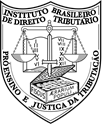LEGAL CERTAINTY AND CHANGE IN JURISPRUDENCE: THE SUPREME COURT’S VIEW ON THE PROGRESSIVITY OF PROPERTY TAXES
DOI:
https://doi.org/10.46801/2595-6280-rdta-46-5Keywords:
LEGAL CERTAINTY, CHANGE IN JURISPRUDENCE, PROGRESSIVITY, PROPERTY TAXESAbstract
In this essay, the author intends to analyze the phenomenon of change in jurisprudence and its consequences over legal certainty, focusing on Brazil’s Supreme Court’s understanding on the applicability of progressivity of aliquots to property taxes. Initially, we present the normative content of Legal Certainty as a principle that ensures legal stability and confidence in the maintenance of Courts’s views. After that, we examine the phenomenon of change in juris-prudence, which happens when a Court revises a position that it had already taken without there being any legal or factual new circumstance. When it hap-pens, the Court must adequately justify the change, and also adopt measures to mitigate its effects. Finally, we analyze the history of Brazil’s Supreme Court’s position on regards to the applicability of progressivity of aliquots to proper-ty taxes, reaching the conclusion that, despite having a solid and stable record of not allowing such progressivity to be applied to property taxes, upon judging the case RE 562.045, Brazil’s Supreme Court effectively made a change in jurisprudence, allowing such application, without presenting the necessary justification. With that, there was a loss to the trustfulness and stability elements that are inherent to Legal Certainty.
Published
How to Cite
Issue
Section
License
Copyright (c) 2020 André Silva Gomes

This work is licensed under a Creative Commons Attribution-NonCommercial-ShareAlike 4.0 International License.
O autor (ou coautor) declara que o artigo submetido à avaliação, que segue em anexo, é de sua autoria, e inédito, comprometendo-se a não publicar este artigo em qualquer outro meio, impresso ou digital, mantendo a exclusividade para a Revista Direito Tributário Internacional Atual, cedendo, em caso de aprovação do trabalho, os direitos autorais à Revista para fins de publicação do trabalho nesta edição.


